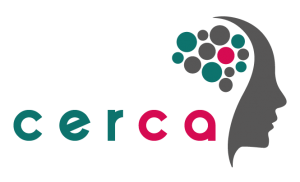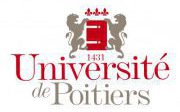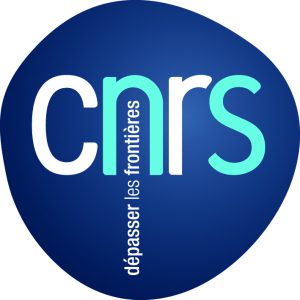What are you looking for ?
Content on this site
A person on the directory
Catalog training
Content on this site
A person on the directory
Catalog training
Writing is a complex human activity. The writer has to compose a coherent message and formulate it in accordance with linguistic rules (grammar, spelling), all the while taking the characteristics of the potential reader into account. The ability to manage all these various mental activities, as well as their time course, can be regarded as an indicator of the writer’s expertise (Alamargot & Chanquoy, 2001). For the cognitive science researchers we are (but also for people interested in these questions), identifying the rules that govern the engagement and course of these mental processes is an essential step towards a greater understanding of writing and processing (Levy & Ransdell, 1996). The Eye and Pen software was designed to help researchers reach this goal (Chesnet & Alamargot, 2005; Alamargot, Chesnet, Dansac & Ros, 2006).
Eye and Pen can be mainly (but not exclusively) used in the context of handwriting studies, whatever the graphic format (from text to drawing). The Eye and Pen software was designed to allow the synchronous recording of handwriting (by means of a digitizing tablet: coordinates and state of the pen) and eye movements (via an optical eye-tracking system: eye coordinates in the task environment). The conjunction of these two signals allows us to study the synchronization between eye and pen movements during pausing and writing periods. For instance, it makes it possible to study not only the visual control of graphomotor execution, but also the reading of the text in order to revise it and the consultation of documentary sources with a view to summarizing them. Eye and Pen allows users to conduct these investigations in a continuous way, without interrupting the activity underway or increasing cognitive load.
In short, this software makes it possible to establish a link between the visual input of writing (gazes on documentary sources and/or text produced so far) and its graphomotor output (pausing and writing phases, drawing). This link can be studied in various situations and media (paper, computer screen, screen tablet, etc.) The Eye and Pen software can be regarded as a type of digital video recorder, which allows users to watch and play-replay the process of graphic generation and associated eye movements as often as they wish. A semi-automated coding system enables users to characterize and classify ocular and graphomotor events.
Eye and Pen can also be used without an eyetracking device to only record handwriting data, for example, in a school classroom.
Some tablet manufacturer (ask your reseller) also sells true inking pen for their devices. Thus, one may use a sheet of paper (or even a booklet made of many pages) on the tablet. Handwriting situation is then very “natural”, with a subject writing with a pencil on a sheet of paper, the tablet serves as a “place mat” the subject can move to feel comfortable.
Eye and Pen has two different modes of operation:
The very first paper about d’Eye and Pen (2005) is in french:
Chesnet, D., & Alamargot, D. (2005). Analyses en temps réel des activités oculaires et graphomotrices du scripteur: intérêt du dispositif ‘Eye and Pen’. L’Année Psychologique, 105(3), 477-520.
The “official” (international) citation of Eye and Pen is:
Alamargot, D., Chesnet, D., Dansac, C. & Ros, C. (2006). Eye and Pen: a new device to study reading during writing. Behaviour Research Methods, Instruments and Computers, 38(2), 287-299.
The latest published paper:
Chesnet, D., Solier, C., Bordas, B. & Perret, C. (2022). A quick briefing on the new version of Eye and Pen (version 3.01): news and update. Reading and Writing. https://doi.org/10.1007/s11145-022-10267-5
System
Windows Seven, Windows 8/8.1., Windows 10/11.
You will have to use a user account with administrative rights to be able to install and use Eye and Pen.
Free disk space
60MB for a complete installation (with samples), plus space needed for recordings and analyses.
Memory
min. 1024 MB with Windows Vista and later.
Video adapter
A minimum resolution of 1024×768 is recommanded (32 MB of video RAM).
USB slot
A free USB slot is required for the SafeNet Sentinel dongle (security lock key) required with Eye and Pen 1 and 2.
Tablets
Every tablet supplied with a Wintab32 compatible driver for Windows is supported by Eye and Pen.
In general, installation of the tablet’s driver also installs a file named WINTAB32.DLL into Windows directory.
Please note that not every manufacturer has battery-less pencils and/or inking pen.
The list below is not exhaustive, but shows a number of compatible device manufacturers, including the main vendor on the market. Many “historic” tablet manufacturer stopped this activity (Aiptek, Genius, Hitachi, Numonics, Oce, Seiko, etc.) within the last 5 years.
| Company’s name | Web site |
| GTCO Calcomp Corp. | http://www.gtcocalcomp.com |
| Huion | https://www.huion.com/ |
| XP-Pen | https://www.xp-pen.com/ |
| Turcom | https://turcomusa.com/ |
| Topaz Systems Inc. | http://www.topazsystems.com/ |
| WACOM Corp. | http://www.wacom.com |
Eyetrackers (optional)
Eye and Pen supports the following eyetrackers:
Note about remote eyetrackers
Unless major changes, we do not plan to support remote eyetrackers because they are hardly usable in a handwriting situation: the camera(s) should be below the participant’s line of gaze. Then , it is not possible to place a tablet “under” the screen.
It may be usable with an LCD tablet, but when the movements of the subject’s forearm masks the camera, the eye is lost for a while. To limit theses drawback, you’d be to setup a strongly constraining situation.
Similar tests have been conducted at S.R. Research with the Eyelink1000 Remote eyetracker and ended with same results.
In general, remote optic eyetrackers are not advisable: most of them were buit to be located below a display screen, not about a tablet on a desk. This leads to problems of adaptation, coordinates liability, while imposing body posture constraints to the subjects.
More information can be found in our FAQ.
The authors of Eye and Pen 1 and 2 are David Chesnet and Denis Alamargot. Version 3 was developped by David Chesnet with scientific guidance of erci Lambert and Cyril Perret, members of the Ecriture (writing) team of the CeRCA lab.
Picture credits: most of the pictures on this site are from Yves Almecija (CeRCA, UMR 7295 CNRS)
 |
|
| MSHS 5, rue Théodore Lefebvre TSA 21103 F – 86073 Poitiers cedex 9 Tél. +33 (0)5 49 45 46 00 Fax : + 33 (0)5 49 45 46 47 |
MSHS – CeRCA – Bâtiment A5 5, rue T. Lefebvre TSA 21103 86073POITIERS Cedex 9, France |
  |
|
| Web: www.mshs.univ-poitiers.fr | Web:cerca.labo.univ-poitiers.fr |
Eye and Pen is a software that evolve with its users.
This means that it was built in function of our research goals (and those of our partners) and it will be enhanced to fulfill the needs of the greatest possible number of users.
The Keep in touch page hosts a contact form which can be used to submit features requests. Depending on the requests, the amount of work required to implement them and of the coherence between these requests and the software’s objectives, we may release a software update as a “patch” (uploaded into the “Updates” section of the “Downloads” menu) or register and “prioritize” requests to treat them later as a “bloc” to release an Eye and Pen upgrade.
The list of supported eyetrackers is thin, but any unsupported eyetracker may become supported. If you’re interested in Eye and Pen, but your device is not supported, please get in touch with us (via email to the support) !
The “Roadmap” lists enhancements we plan to add to Eye and Pen. Some are drawn from requests and suggestions from users.
Roadmap to version 4.0
Roadmap to version 3.0
Roadmap to version 2.0
System/Hardware
Acquisition
Analysis